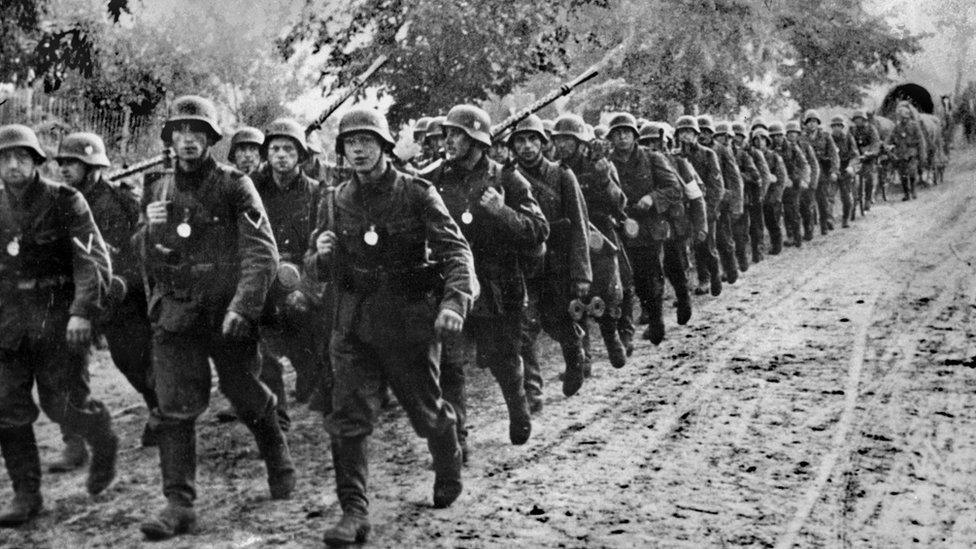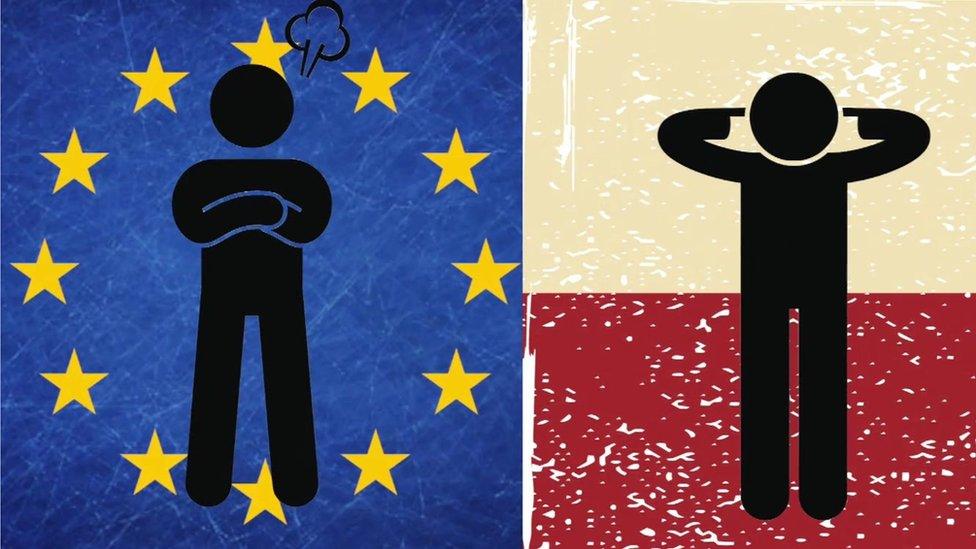Poland in row with historians over landmark war museum
- Published

The museum is still being built, and is scheduled to open early in 2017 (Pic: computer visualisation)
Nearly 200 North American and European historians and other academics have written in protest against a plan by Poland's conservative government to abandon a new World War Two museum because of its global perspective on the war.
The government wants the events of 1939-45 to be presented from a narrower Polish perspective.
The cantilevered glass and cement building has been described by US historian Timothy Snyder, one of the letter's signatories, as "perhaps the most ambitious museum devoted to World War Two in any country".
The exhibition, which took eight years to collect, will include an American tank, a Soviet tank and a German rail carriage. It does not present a conventional national history of the war and begins in the aftermath of World War One, with the rise of authoritarian regimes in Europe and Japan.
Installation of the exhibits began in March and the process is due to be completed by the end of November, ahead of an official opening in early 2017.
"A huge exhibition is almost ready for visitors, reflecting years of hard work as well as expenditures of many millions of dollars. To close it now would constitute a grave injustice, unprecedented in the democratic Western world," the academics wrote in an open letter (in Polish) to the culture minister, external, Piotr Glinski. The letter was published by the liberal-leaning daily, Gazeta Wyborcza.

German troops quickly overwhelmed Poland's defences in the September 1939 "Blitzkrieg"
Patriotic agenda
Poland's governing Law and Justice (PiS) party comfortably won last October's parliamentary elections, professing to promote traditional Catholic and patriotic values and serve the many Poles who feel left behind by the country's largely successful transition from communism to a democratic market economy.
On Thursday Mr Glinski said he had decided to merge the museum, external with the as yet non-existent Museum of Westerplatte, which would focus on the German attack on a Polish garrison on the Westerplatte Peninsula, near Gdansk, in September 1939.
An earlier culture ministry statement said the plan did not mean a decision had been taken to liquidate the war museum.

What is the Battle of Westerplatte?

Every year Poland commemorates the start of WW2 at the Westerplatte Peninsula where the first shots were fired
At 04:45 on 1 September 1939, a German battleship opened fire on the Polish garrison based on the Westerplatte Peninsula in the free city of Danzig, now Gdansk, which was to become the first battle of WW2
The Polish garrison of around 200 soldiers held out under German naval and heavy field artillery for seven days
Britain and France declared war on Germany on 3 September 1939, following the invasion of Poland
On 17 September 1939, the Soviet Red Army invaded eastern Poland
On 6 October 1939, German and Soviet troops gained full control and divided occupied Poland between themselves
Poland commemorates the start of WW2 at a monument to the victims at Westerplatte

A merger of the museums would give Mr Glinski the legal justification to dismiss the museum director, Prof Pawel Machcewicz, and appoint a new director, who would then be able to change the museum's exhibition.
Mr Glinski has already met the director to discuss the planned merger. According to Prof Machcewicz, the minister "expressed his hope that the Museum of the Second World War would present the Polish historic experience and the Polish perspective on the war".
Prof Machcewicz replied that limiting the exhibition to the battle for Westerplatte would not show the entirety of the Polish experience of the war, leaving out important topics such as the Holocaust, the Polish underground army and the Katyn massacre, in which the Soviet NKVD murdered more than 22,000 Polish officers.
- Published20 January

- Published27 October 2014

- Published26 February 2016

- Published20 January 2016

- Published25 November 2014

- Published13 January 2016
